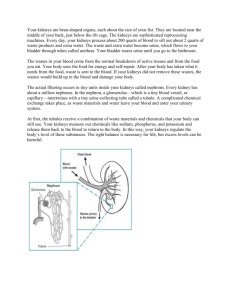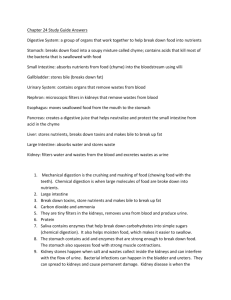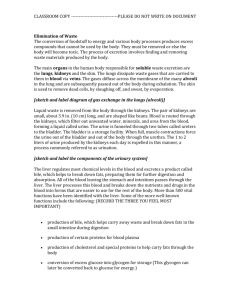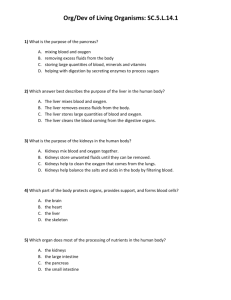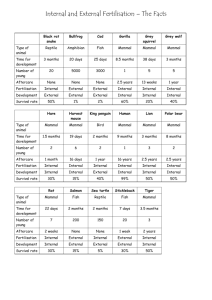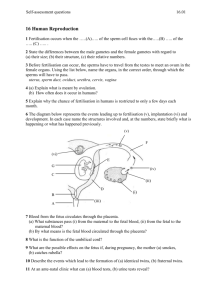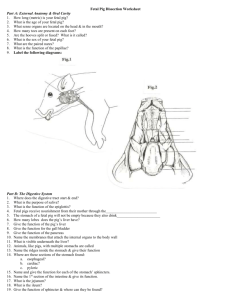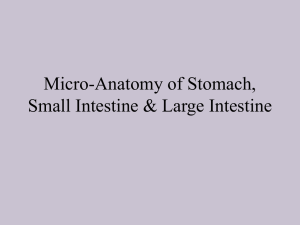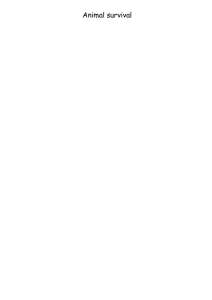Investigating Cells – What you need to know
advertisement
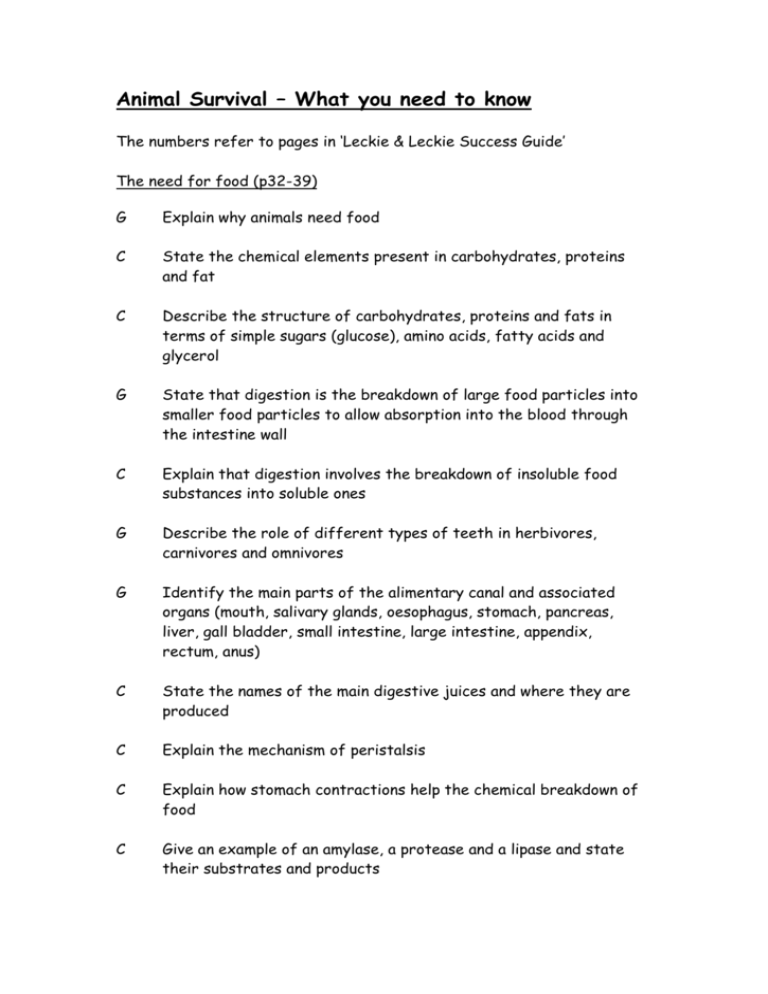
Animal Survival – What you need to know The numbers refer to pages in ‘Leckie & Leckie Success Guide’ The need for food (p32-39) G Explain why animals need food C State the chemical elements present in carbohydrates, proteins and fat C Describe the structure of carbohydrates, proteins and fats in terms of simple sugars (glucose), amino acids, fatty acids and glycerol G State that digestion is the breakdown of large food particles into smaller food particles to allow absorption into the blood through the intestine wall C Explain that digestion involves the breakdown of insoluble food substances into soluble ones G Describe the role of different types of teeth in herbivores, carnivores and omnivores G Identify the main parts of the alimentary canal and associated organs (mouth, salivary glands, oesophagus, stomach, pancreas, liver, gall bladder, small intestine, large intestine, appendix, rectum, anus) C State the names of the main digestive juices and where they are produced C Explain the mechanism of peristalsis C Explain how stomach contractions help the chemical breakdown of food C Give an example of an amylase, a protease and a lipase and state their substrates and products G Explain how the structure of the small intestine is related to its function C Explain how the structure of a villus (including lacteal and blood capillaries) is related to the absorption and transport of food G Describe the role of the large intestine in water absorption and elimination Reproduction (p40-43) G Describe the structure of sperm and egg cells G State what is meant by internal and external fertilisation C Explain the importance of internal fertilisation to land-living animals G Describe the process of fertilisation G State that sperm cells are produced in testes G State that eggs are produced in ovaries, and released into oviducts where fertilisation happens G State that in fish, eggs are protected by a flexible membrane covering G State that fish embryos obtain food from yolk in the egg and, after hatching from yolk in the yolk sac G Describe how the mammal embryo develops in the uterus surrounded by fluid in the amniotic sac C Describe the structure and purpose of the placenta C Explain the relationship between the number of eggs or young produced and the amount of protection they receive G State that young fish can look after themselves after hatching G State that, after birth, young mammals depend on the adults for care and protection Water and waste (p44-45) G State the ways in which a mammal gains and loses water G State that the kidneys are the main organs for regulating the water content in a mammal C Explain how ADH regulates the water balance of the blood G Identify the positions and explain the functions of the kidney, renal arteries and veins, ureter and bladder G State that kidneys filter the blood and reabsorb useful materials such as glucose C Explain the structure of a nephron, including Bowman’s capsule, glomerulus, blood capillaries and collecting duct C Explain how urine is produced in a nephron G State that urea is a waste product removed in the urine C State that urea is formed in the body from the breakdown of surplus amino acids, and is carried to the kidneys in the blood G Explain the dangers of damage to the kidneys by accidents or disease C Describe the benefits and limitations of ‘artificial’ kidneys and kidney transplants Responding to the environment (p46-47) G Give examples of environmental factors which affect animal behaviour (e.g. light, chemicals, humidity) C Explain the significance for animals’ lives of their responses to environmental factors G Describe the response of an animal to change in one environmental factor e.g. woodlice in shade and light G Describe two examples of rhythmical behaviour and identify the trigger stimulus in each case C Explain the significance of two examples of rhythmical behaviour to the animals concerned

